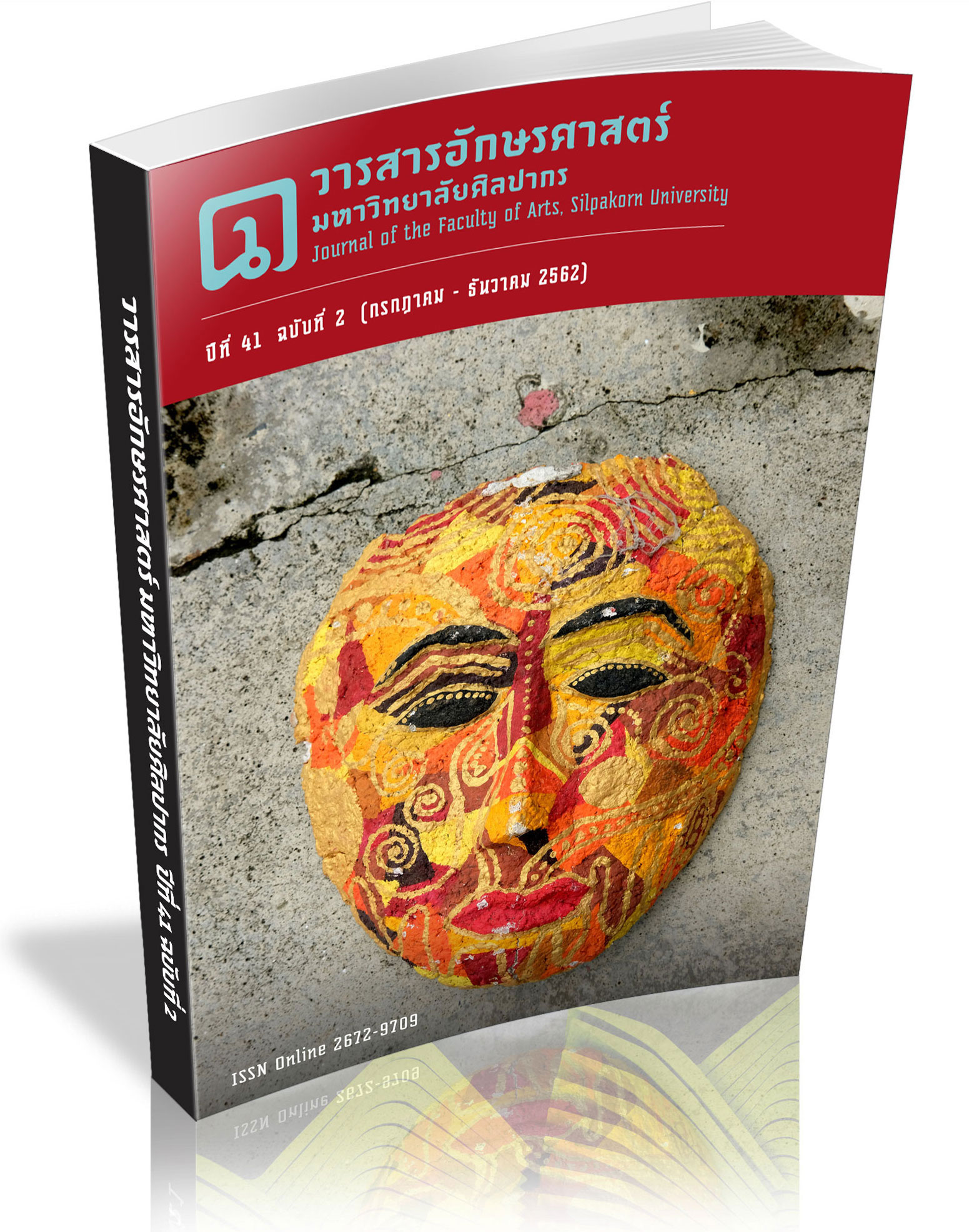Role of the Chinese in the Thai Economy from the Ayutthaya period to the Reign of King Rama V
Keywords:
The role of Chinese, Economics, Ayutthaya period, Thonburi period, Rattanakosin period, Munnai-Prai systemAbstract
This article studies the role of the Chinese in Thai economy from the Ayutthaya period to the reign of King Rama V in order to observe the continuity and development of their role. It looks through the Munnai-Prai system that controlled the politics, economy, and society of the kingdom from the beginning until the termination. The study by clear showed that the economic role of the Chinese in Siam could be divided into three phases. The first phase during the Ayutthaya period showed the role of the Chinese who secretly ran economic activities under the Munnai-Prai system and a growth in Chinese what relied on the support from Munnai or their masters. The second phase, during the Thonburi period saw a Chinese become king. This was King Taksin who used his economic prosperity to income the governor of Muang Tak, and this man crowned himself as the king of Thonburi. Therefor, the Chinese during the Thonburi period had grate influence in politics and economic development. During the 3rd phase, from the Rattanakosin period to the reign of King Rama V, the Chinese played an important role in economies to accommodate the economic changes of the country.
Downloads
References
Lewchaicharn, B. (2007). Dangerous from the West in the Reign of King Rama III. Bangkok: Silpawattanatham. (In Thai)
Bualek, P. (2007). “The Origin and Way of Life of the Working Class in Thailand during the Late 18th centuries to the 19th century.” Journal of Historical Society, 29:120-158. (In Thai)
Chewchaisak, V. (2004). State Economic Policy during the Reign of King Rama III. Bangkok: Chulalongkorn Publishing House, 2004. (In Thai)
Crawfurd, J. (1971). The Crawfurd Papers. Bangkok: the Vajirayana National Library.
Eoseewong, N. (2000). Pen and Sail: Literature and History in Early Bangkok. 3rd ed. Bangkok: Praew Publishing House. (In Thai)
Eoseewong, N. (2004). Thai Politics in the Reign of King Taksin. 7th ed. Bangkok: Silpawattanatham. (In Thai)
Moral and Political Sciences, University of. (1986). Code of King Rama I, Thai Minor Era 1166, Printed in Accordance with the Royal 3 Seals Law. Bangkok: University of Moral and Political Sciences. (In Thai)
Na Pombejra, Dhiravat. (2010). Letter from Phiphatkosa to the Dutch East India Company (1769). In 100 Important Documents: Substance of Thai History Document, Vol.5 ( pp. 39-54). Bangkok: Saksopha Printing House. (In Thai)
Nibhatsukit, W. (2005). Trade-Related Groups in Ayutthaya Society, 1629-1767. Doctoral Thesis, Arts (History), Chulalongkorn University. (In Thai)
Nibhatsukit, W. (2014). The Development of Cities before the Establishment of Ayutthaya. Journal of the Faculty of Arts, Silpakorn University, 36(1) : 9-42. (In Thai)
Fine Arts Department. (1998). Dutch documents during the Ayutthaya period 1608-1650 and 1624-1642). Bangkok: Division of Literature and History. (In Thai)
Fine Arts Department. (1979). Memo of Friendship between Siam and Various Countries in the 17th century, Volume 3. Pranakorn: Department of Fine Arts. (In Thai)
Fine Arts Department. (1991). Royal Chronicle, Vol 2. Bangkok: Department of Fine Art. (In Thai)
Sattayanurak, S. (2003). Buddhism and Political Concepts during the Reign of King Rama I (1782-1819). Bangkok: Matichon Publishing House. (In Thai)
Viraphol, S. (2005). Tribute and Profit: Sino-Siamese Trade, 1652-1853. Bangkok: Toyota Foundation. (In Thai)
Skinner, W. G. (1986). Chinese Society in Thailand: An Analytical History. Bangkok: Thai Wattana Panich. (In Thai)
Ruengchiwin, S. (2006). The Early Ayuthaya’s Murals in Crypt of Parng Wat Ratchaburana Ayutthaya. Master Thesis, Silpakorn University. (In Thai)
Testimony from Khun Luang Wat Pradu Songtham Documents from the Royal Hall. (1991). Bangkok: Secretariat of the Prime Minister. (In Thai)
Thongchai, U. (1983). Ayutthaya and Lan Na Relations 1291-1767. Master Thesis, Arts (History), Chulalongkorn University. (In Thai)
Wolters, O. W. (1960). Chen-Li-Fu a State on the Gulf of Siam at the Beginning of the 13th Century. JSS XL VIII, Pt.2, November : 1-35.
Prapaphan, Y. (1981). Tax Framing in Thailand in the Early Bangkok Period. Bangkok: Sangsan Publishing House. (In Thai)
Downloads
Published
How to Cite
Issue
Section
License
ผู้เขียนบทความต้องยินยอมในข้อกำหนดต่าง ๆ ของวารสารก่อนส่งบทความตีพิมพ์




